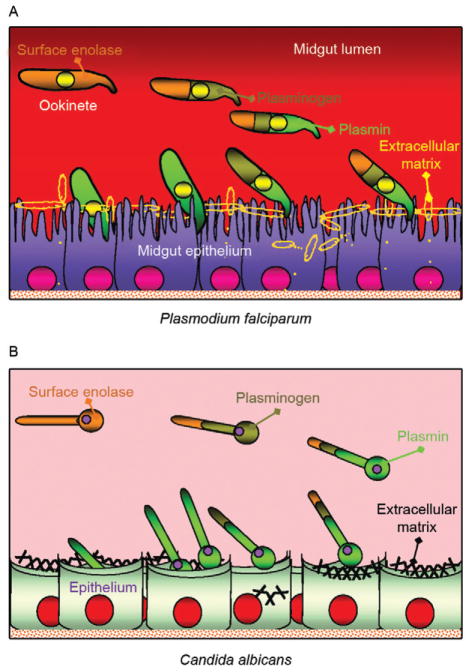Figure.
Model for the role of plasminogen in pathogen invasion of host tissues. Similar mechanisms are hypothesized to operate for apicomplexans (e.g., Plasmodium falciparum) (A), fungi (e.g., Candida albicans) (B) and bacteria (not shown). From left to right: (i) the pathogen exports enolase protein to its surface (burned sienna colour) by an unknown mechanism; (ii) surface enolase captures mammalian plasminogen (olive green) from its environment; (iii) plasminogen is activated into plasmin (grass green), likely by tissue plasminogen activator (not shown); (iv) surface plasmin promotes the degradation of the extracellular matrix. Degradation of this physical barrier promotes invasion of the underlying epithelium.

